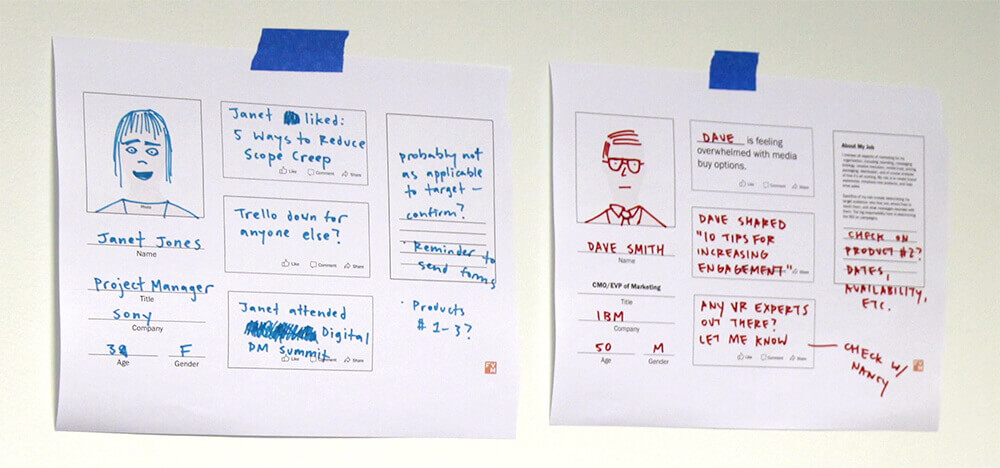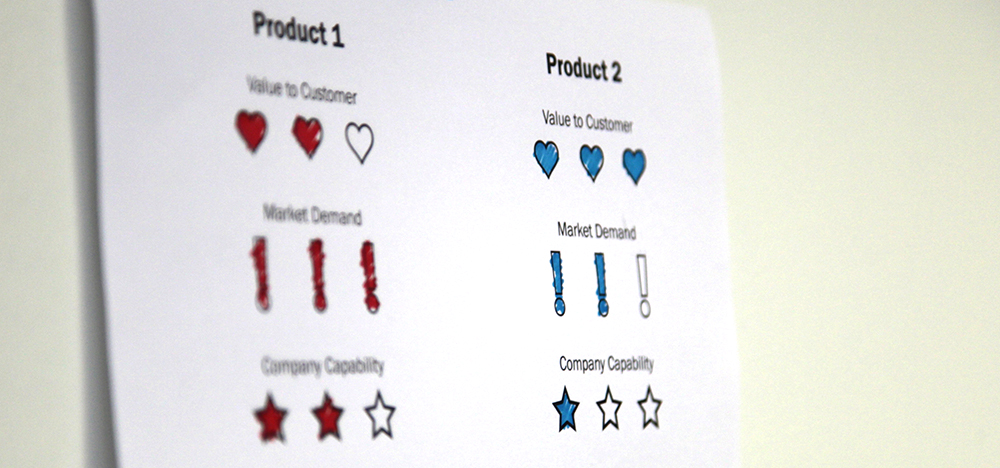Of pastries and products: how to find a common language
Quick — what’s the difference between a funnel cake, a beignet, and a zeppole?

At FVM, we spend a lot of time discussing (and eating) snacks. That recently led to a conversation about our favorite deep-fried, sugar-dusted pastries. Some of us knew them as beignets. Others insisted they were zeppoles. A third group rounded out Team Funnel Cake.
Naturally, we Googled it. It turns that while the three pastries might seem similar at first, each has its own distinct characteristics and history. And each of us had assumed that everyone else had grown up eating the same sweet treats we had.
The same kind of assumption happens in businesses all the time. In fact, we recently helped a client — a new-to-market technology company — whose employees were all over the place in terms of what the company had to offer, and who the company was looking to serve.
One group of employees viewed the company through the lens of one particular capability, while another faction emphasized a different product altogether. Different products were at different stages of completion. Words like “solution” and “tool” were used interchangeably. There was a lack of certainty as to whether the people using the products were the same people buying the products. The developer probably sighed a lot.

That’s where we came in. FVM’s task was to facilitate a daylong product planning session that would bring clarity to our client’s products and services, building the foundation for their go-to-market plan.
First, we did our homework. The subject matter was complex, but we took the time to reach our own understanding of the client’s products, technologies and audiences. We’re a naturally curious bunch.
Then we built creative exercises from scratch. While we have reliable favorites, we don’t use a cookie-cutter approach for our clients. Even within the same industry, no two companies are identical.
In this case, our goal was to trigger discussion. The exercises were cumulative — beginning with customers and their issues, then identifying the services that solve those issues, the delivery of those services, and their value, and finally ending with overall prioritization.
On the day of the session, we met with our client’s senior leadership. We created teams by mixing members from different roles across the company. Then we guided them through the exercises we created to cover four Ps of product language.
- Personas

We created social media-style profiles for our client’s target customers based on the background information available, including brief bios and status updates. Who were they? What would they be excited about? What would they tweet in frustration? Together, the teams not only completed these cards, but their discussion also revealed entirely new groups of buyer and user personas to target.
- Products
Next, we led the teams through a customized game of Taboo. Players had to get teammates to guess the product or feature listed on their card. The catch was, they couldn’t say the word itself, or the five related words listed on the card.
Participants were forced to cut the jargon they’d previously leaned on, instead describing their offerings in simple, everyday language. They successfully identified areas where they were confusing internal and external language — what they did, versus what they delivered — and where they were overusing, and therefore watering down, certain key words.
- Positioning
This is where the bigger picture began to take shape. For each product, the teams discussed and answered four key questions.
- What do I get and how do I get it?
- What will it help me do?
- Which features and capabilities should I be most excited about?
- What other products and services are required and/or recommended?
This exercise was especially enlightening for everyone in the room. It became clear that there were overlaps and inconsistencies in terms of what features were being highlighted, and to whom. The group began identifying redundancies and slashing unnecessary products on the spot.
- Prioritization

Finally, we had participants fill out scorecards for their core products, using only their gut reactions to assign values based on four metrics:
- Value to Customer — How valuable is this product to its audience?
- Market Demand — How large is the need in the near term?
- Capability — How good are we at this today?
- Speed to Market — How fast can you go, and what are the barriers?
We used a rubric to see where everyone’s scores landed. By this point, the wall was filled with a linear map of the client’s products and offerings. We could see at a glance what was working and what wasn’t.
Finally, we pushed products through a bracket, March Madness-style, to determine which products could be crowned champion. Each group still had a favorite, but we were able to reach an agreement on overall hierarchy.
Finding Resolution
Our client had developed incredible technology to create an impressive range of products. But our exercises allowed them to untangle their language to reach a common understanding. We created a neutral space where everyone could voice his or her opinions, identify where progress needed to be made, and reach important strategic decision points.
Today, this client is much further along in its product marketing process. The company’s leadership is aligned to make their business more competitive — which is always our ultimate goal. Because getting everyone on the same page is a sweet, sweet deal — regardless of what you want to call it.
